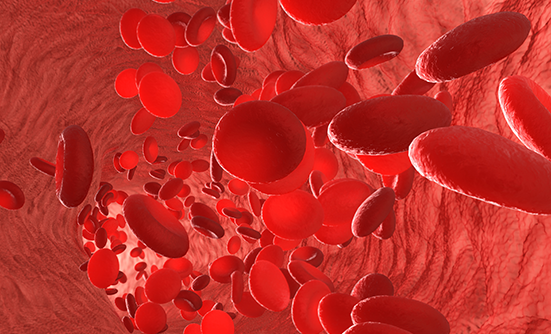The treatment of cancer has changed significantly since the 1950s and continues to evolve on a daily basis. The once 3 mainstays of cancer treatment—surgery, chemotherapy, and radiation therapy—have now been joined by novel targeted therapies and immunotherapies. In the 21st-century, cancer care has focused on the combination of treatment modalities to cure, and improve the survival of, patients with cancer.
Surgery
Surgery is recognized as the oldest therapy for the treatment of cancer and remains the single most effective method to treat and cure cancer. Surgery is used in the diagnosis (biopsy) and treatment of primary, regional, and metastatic or distant (cancer that has spread) cancer. Depending on the specific diagnosis of cancer, the tumor stage, and location, surgery may be recommended for cure, prevention, and palliation (relief of symptoms). Surgery can also be used in the rehabilitation of patients with cancer.
Before the 1950s, increasingly radical surgical methods were performed in an attempt to improve survival. Significant advances in cancer biology, pathology, imaging, and clinical trials (treatment research) have led to more limited, conservative, and multimodal (laparoscopic and robotic) surgical treatments.
Advances in laparoscopic and robotic-assisted procedures offer patients and surgeons significant advantages with improved visualization of the tumor, decreased blood loss, decreased cases of wound infection, shorter recovery time, and improved treatment outcomes. Surgery is most often combined with nonsurgical interventions, such as chemotherapy and/or radiation therapy to increase patient survival and improve quality of life.
Chemotherapy
Chemotherapies are drugs administered as intravenous infusions, oral pills, subcutaneous or intramuscular injections, or delivered to a specific site of the tumor, that exert their cytotoxic (destructive) effect on the cell cycle (the process of how cells divide and multiply) of normal and cancer cells. Chemotherapy targets the different phases of the cell cycle, halting cell growth and division and leading to apoptosis (cell death).
In the treatment of cancer, chemotherapy may be used to cure cancer, make the cancer grow slower, or keep the cancer from spreading (control), destroy cancer cells that might have spread to other parts of the body (metastasis), and relieve symptoms such as pain (palliation).
Chemotherapy may be used to shrink tumors before surgery (neoadjuvant) to facilitate a more conservative surgical approach. It may also be used after surgery to help destroy any cancer cells that may remain. Depending on the cancer diagnosis and the stage of the disease process, the treatment plan may include chemotherapy before or with radiation therapy.
Radiation Therapy
Radiation therapy, also called radiotherapy, uses high doses of controlled ionizing energy in the form of electrons, beta particles, and protons that penetrate the body to slow the growth of, or destroy, cancer cells. The ionizing energy affects the water molecules in cells, causing the formation of free radicals and breaks in the cell’s DNA strands, and resulting in cell death as the cancer cell is unable to repair itself. Radiation therapy can be used to cure, stop, or slow the growth of cancer. When a cure is not possible, palliative radiation may be used to shrink tumors and relieve symptoms such as pain. For some patients, chemotherapy is given concurrently (together) with radiation therapy to increase the sensitivity or the response of the tumor to the radiation.
Radiation therapy can be delivered in the form of external beam, in which the ionizing energy comes from the linear accelerator (machine that aims the radiation at the area of cancer) and penetrates through the surface of the skin. New techniques of external beam, such as IMRT (intensity-modulated radiation therapy), 3D conformal radiation therapy, and SBRT (stereotactic body radiotherapy), allow higher doses of radiation to be delivered to the tumor area, while reducing the radiation to nearby healthy tissue.
Internal radiation therapy uses a sealed source (brachytherapy), such as seeds, capsules, ribbons, plaques, rods, or catheters, or an unsealed source (radiopharmaceutical), such as radiolabeled monoclonal antibodies that are placed, ingested, injected, or instilled into a body cavity.
Radiation therapy can be used to cure, stop, or slow the growth of cancer. When a cure is not possible, palliative radiation may be used to shrink tumors and relieve symptoms such as pain. Radiation may be given before surgery to shrink tumors, during surgery to deliver the treatment straight to the cancer, or after surgery to destroy any remaining cancer cells. Radiation may be given before, during (concurrently), or after chemotherapy. For some patients, chemotherapy is given concurrently with radiation therapy to increase the sensitivity or the response of the tumor to the radiation.
Targeted Therapy
Molecularly targeted therapies are among the latest advances in modern cancer care, providing patients the opportunity to receive treatments that target the cancer more specifically than traditional drugs. Targeted therapies are drugs that are designed to work directly on the tumor, by targeting the internal components and function of cancer cells, the receptors on the surface of the cancer cell, or the blood vessels that supply oxygen to cancer cells.
Immunotherapy
Immunotherapy, a form of targeted therapy, is one of the newest approaches to treating cancer. Immunotherapy is based on the understanding that cancer cells can hide from the body’s immune system through multiple techniques that allow them to grow, multiply, divide, and spread. Immunotherapies work by altering the immune system either by stimulating or boosting the immune system with the production of lymphocytes (a type of white blood cell) or antibodies, or by overcoming the ability of cancer cells to hide from the immune system and not be recognized as a foreign invader.
Immunotherapy has the potential to remain effective for long periods far beyond the end of treatment, as the immune system develops a “memory.” Several immunotherapies have been approved so far for the treatment of many types of cancer, and more are being developed.
Immunotherapy is not approved for every subset or every stage of cancer types, and not every patient is a candidate for immunotherapy, which depends on the cancer type, the patient’s overall health and immune system function, and treatment history.
Through research and clinical trials, much has been learned about how to train the immune system to find and destroy
cancer cells. Immunotherapy is changing the lives of people with cancer, by allowing them to have better outcomes and often a better quality of life.
A Promising Future
The future of cancer treatment is very promising. Advances in treatment techniques and results of research and clinical trials have led to significant improvements in treatment outcomes and quality of life for patients with cancer. New therapies for different types of cancer are constantly becoming available. In 2017, the first 2 gene therapies were approved in the United States, ushering in a new way of treating, and curing, cancer.
Key Points
- Surgery is the oldest treatment for cancer and remains the single most effective method to cure many cancers
- Depending on the specific cancer diagnosis, tumor stage, and location, surgery may be recommended for cure, prevention, palliation, or rehabilitation
- Chemotherapy targets the different phases of the cell cycle, halting its growth and leading to cell death
- Radiation is used before surgery to shrink tumors, during surgery, or after surgery to destroy remaining cancer cells
- Immunotherapy is the answer to cancer cells being able to hide from the immune system, which allows cancer cells to grow, multiply, divide, and spread
















